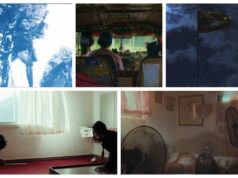Staging the Philippines’ masterpiece
By Joseph L. Garcia, Reporter
“EVERY country has its grand canvas… the so-called masterpiece that hangs in a hallowed hall and sums up the national identity for generations to come,” said Count Rostov, the main character in A Gentleman in Moscow by Amor Towles. If this is true, that might be Luna’s Spoliarium for this country, and your guess is as good as mine as to what that says about us as a nation. In the case of literature, we’ll have Dr. Jose Rizal’s novels, the Noli me Tangere and El Filibusterismo to look to, and that’s subject to your interpretations as well.
Speaking of interpretations, Noli me Tangere was adapted as an opera in 1957, with music and libretto by National Artists Felipe Padilla de Leon and Guillermo Tolentino. The opera had a run at the Cultural Center of the Philippines (CCP) last March, and will run again this weekend until June 23.

The opera is produced by J&S Productions Inc. Executive Producer Edwin Josue told BusinessWorld that they decided to produce the opera again “Because of the clamor for a rerun from the millennials. And also, the CCP. So it fit that it should be part of the pre-50th year (celebration) of the CCP.”
The rerun also lands near the birthday of National Hero and Noli author Jose Rizal, but Mr. Josue says that that was just a matter of the venue’s availability.

The production this weekend will see new artists joining the cast (such as a new Maria Clara, Mehco Manlangit). Mr. Josue also says that the set has been improved.
BusinessWorld sat through a dry run of the opera this week, and while the new LED screens for the Noli opera didn’t work quite as well at the beginning, leading to a delay, when they finally got it up and running, it looked like a pure work of art, especially in the scenes in Maria Clara’s bedroom, where magnified capiz windows and a giant vision of the Virgin Mary looms over her and highlights her despair.

The costumes are also brilliant, and Maria Clara’s costumes, especially the gown worn when fishing and her peignoir, are a study in Filipiniana frou-frou. Class, an important factor in the novel, was highlighted through the costumes — speaking of which, while the Dona Victorina role is mostly silent, she’s a presence onstage with several costume changes and geisha makeup approaching the grotesque.
As for the singing: Bianca Lopez’s Maria Clara displays a rich and refined coloratura soprano, but her voice achieves the fragility and depair needed for the character in the second act. Furthermore, she embodies pathos almost completely, and her sickly and weak movements makes her seem inhabited by the ghost of despair itself. The parts of Elias and Basilio are rousing, and the voice of that evening’s Basilio, played by Miguel Suarez, has a quality made for crying (or singing telenovela theme songs). I would argue as well that Bernadette Mamauag’s Sisa is the best singer in this production after Maria Clara, and her vocal acrobatics as she descends into madness need to be heard.

It’s a fine work, and puts the novel in better context.
It’s surprising to note that the rerun was prompted by a desire on the part of young people, and of this Mr. Josue says, “I think the purchasing power of the Filipino has improved. People have gone out and watched Broadway shows all over. Coming back to the Philippines, they’re more hungry now to see more Filipino things.”

An art exhibit titled Ang Sampung Pangarap ni Rizal, which features the artworks of the Pasig Art Club members and other guest artists, will be on display on media partner BroadwayWorld.com. Part of the proceeds will go to 10 different youth organizations and groups, which include Tanghalan Mandaluyong, Natasha Goulbourn Foundation, Soup Kitchen of Pasig, Phil-Asia Assistance Foundation, Gota de Leche, Pasig Catholic College Center for Culture and Arts, Sagip Batangpalengke, Teach Peace Build Peace Movement, San Pablo Apostol of Tondo Youth Ministry, and Hospicio de San Jose. To buy tickets, call 0915-593-4777, 0947-168-1714 or the CCP Box Office at 832-3704/06, or visit https://ticketworld.com.ph/.



